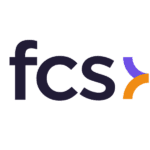 Hotel revenue managers need help to get the market segmentation right in their hotels and hotel groups. The major challenge is to capture the market segment to maintain high data quality. Another challenge is to find the right balance in the number of relevant market segments. A third challenge is how market segments are structured in the hotel PMS. These three challenges are difficult to manage and therefore lead to questions about if hotels can trust the data by market segment.
Hotel revenue managers need help to get the market segmentation right in their hotels and hotel groups. The major challenge is to capture the market segment to maintain high data quality. Another challenge is to find the right balance in the number of relevant market segments. A third challenge is how market segments are structured in the hotel PMS. These three challenges are difficult to manage and therefore lead to questions about if hotels can trust the data by market segment.
When more hotels are moving towards total revenue management, it is vital to rethink market segmentation. Hotels with many facilities, such as restaurants, bars, meeting spaces, spas, and golf, also attract guests not staying in the hotel. Each facility might have its market segments, so how should hotels applying total revenue management create a manageable market segmentation structure?
Definition of market segments in hotels
Market segmentation divides a larger market into smaller groups of consumers with similar needs or characteristics. In the context of hotels, market segmentation can be based on various factors, including the reason for travel to the destination.
Travel reason segmentation is a way to understand the motivations behind why a customer chooses to travel to a particular destination. This type of segmentation can be helpful for hotels to tailor their offerings and marketing efforts to each segment’s specific needs and desires. Some common reasons for travel include:
- Business
- Individual business travelers often prioritize location, convenience, and amenities such as high-speed internet.
- Business events such as conferences
- Business groups
- Leisure
- Individual leisure travelers may value location, scenic views, relaxing recreational activities like a spa, pool, or adventures, outdoor recreation, and excitement such as hiking or extreme sports.
- Private events such as weddings, parties, etc.
- Leisure groups
Other facilities in the hotel there are also reasons why someone not staying in the hotel would like to visit the facility. For example, in restaurants, common reasons are to meet family and friends or celebrate something. Meeting rooms for meetings and private events such as weddings or birthday parties. Spa to relax and re-energize.
By segmenting the market based on (travel) reasons, hotels can better understand the needs and preferences of each group and tailor their offerings and marketing efforts accordingly. This allows hotels to improve the customer experience and increase revenue by appealing to a specific market segment.
Overview of total revenue management
Total revenue management (TRM) is a comprehensive approach to maximizing revenue in the hospitality industry that considers multiple factors, including pricing, inventory management, and customer segmentation. By leveraging data and technology, TRM helps hotels to optimize their revenue and improve the customer experience.
Market segmentation is a critical component of total revenue management. Market segmentation allows hotels to understand their customers better and tailor their offerings and marketing efforts to specific segments. By combining market segmentation and dynamic pricing strategies, TRM helps hotels to optimize their revenue by targeting the right customers with the correct offers at the right time.
The purpose of market segmentation in the context of TRM
The purpose of market segmentation in the context of total revenue management is to enable hotels to understand their customers better and tailor their offerings and marketing efforts to meet their specific needs and preferences. In addition, by segmenting the market, hotels can identify target segments most likely to generate revenue and respond positively to specific promotions and discounts. This helps hotels to improve the customer experience and increase their overall revenue.
In the context of TRM, market segmentation is an essential tool for optimizing pricing and inventory management strategies. By understanding the needs and preferences of each segment, hotels can use dynamic pricing strategies to adjust room rates based on the expected demand for specific dates. This helps hotels to increase their revenue by targeting the right customers with suitable offers at the right time.
Market segmentation helps hotels improve their marketing efforts by personalizing their marketing messages and promotions for each segment. This helps hotels increase their revenue and enhances the customer experience by delivering more relevant and appealing offerings.
Steps in market segmentation
Identifying target markets
Identifying target markets is a critical step in the market segmentation process in total revenue management. By understanding the needs and preferences of each segment, hotels can tailor their offerings and marketing efforts to appeal to specific groups of customers.
The three levels of segmentation in hotels are:
- Reason for travel to the destination: This involves segmenting the market based on the purpose of the trip, such as business, leisure, or special events.
- Origin of the journey: This involves segmenting the market based on where the guest lives, such as a specific city or region.
- Psychographics: This involves segmenting the market based on psychological and lifestyle characteristics to match the star rating and concept of the hotel.
Other options are to segment by booking channel or booking window.
By considering each of these levels of segmentation, hotels can create a comprehensive picture of their target markets and develop marketing and pricing strategies tailored to each segment’s needs and preferences. This helps hotels to improve the customer experience and increase their overall revenue.
Understanding customer needs and behavior
Understanding customer needs, and behavior is crucial to market segmentation in total revenue management. By gaining insight into what motivates and drives customer behavior, hotels can tailor their offerings and marketing efforts to meet the needs and preferences of specific segments.
There are several ways hotels can understand customer needs and behavior, including:
- Surveys and feedback: This involves gathering customer information through surveys, feedback forms, and other means. This provides valuable insight into customer needs, preferences, and opinions.
- Data analysis: This involves analyzing customer interactions and transactions to gain a deeper understanding of customer behavior. This includes data such as booking history, purchase history, and booking behavior.
- Market research involves researching market trends and customer behavior in the hospitality industry. This helps hotels to stay up-to-date on industry trends and customer preferences.
By leveraging these methods, hotels can comprehensively understand customer needs and behavior and use this information to improve the customer experience and increase overall revenue. Additionally, by regularly gathering and analyzing customer data, hotels can continually refine and enhance their market segmentation strategies to ensure that they effectively target the right customers with the right offers at the right time.
Evaluating the potential of each segment
Evaluating the potential of each segment is an essential step in the market segmentation process in the context of total revenue management. By understanding the size and potential of each segment, hotels can make informed decisions about how to allocate resources and prioritize their efforts. There are several methods that hotels can use to evaluate the potential of each segment, including:
- Market size: This involves assessing the size of each segment in terms of the number of potential customers and the overall market opportunity.
- Revenue potential: This involves evaluating the revenue potential of each segment, including the average spend per customer, the frequency of visits, and the overall revenue opportunity.
- Customer value: This involves assessing the value that each segment brings to the hotel, including repeat business, referrals, and customer loyalty.
- Competitor analysis: This involves analyzing the competition in each segment and assessing the potential for growth and market share.
By evaluating the potential of each segment, hotels can make informed decisions about which segments to target and how to allocate resources and prioritize their efforts. This helps hotels to maximize their revenue and improve the customer experience by providing tailored offerings and experiences to specific segments.
Benefits of market segmentation in TRM
Improved targeting of promotions and discounts
One of the critical benefits of market segmentation in the context of total revenue management is improved targeting of promotions and discounts. By understanding the needs and preferences of specific segments, hotels can effectively tailor their promotions and discounts to reach and attract the right customers.
Market segmentation can also help hotels to optimize their pricing strategies by tailoring prices to the needs and preferences of specific segments. For example, hotels can offer lower prices to price-sensitive segments during slow periods to increase occupancy or offer premium pricing to high-value segments during peak periods to maximize revenue.
Improved targeting of promotions and discounts can help hotels increase their overall revenue by attracting and retaining customers and creating a better customer experience by providing tailored offerings and experiences to specific segments. Additionally, it helps hotels to build customer loyalty by demonstrating that they understand and value the needs and preferences of their customers.
Better allocation of resources
Market segmentation in the context of total revenue management can also help hotels to allocate their resources better. By understanding each segment’s size, potential, and needs, hotels can make informed decisions about allocating resources to achieve the most significant impact.
Market segmentation can also help hotels to optimize their operational efficiency by streamlining processes and maximizing the use of resources. For example, hotels can create more targeted and effective marketing campaigns by focusing on specific segments, reducing the customer acquisition cost for new customers.
Better resource allocation helps hotels maximize their revenue and improve the customer experience by providing tailored offerings and experiences to specific segments. Streamlining processes also helps hotels improve their operational efficiency and reduce costs.
Increased revenue and profitability
One of the primary benefits of market segmentation in the context of total revenue management is increased revenue and profitability. In addition, by understanding the needs and preferences of specific segments, hotels can effectively tailor their offerings and experiences to reach and attract the right customers
Hotels can increase their overall revenue by targeting promotions and discounts to specific segments by attracting and retaining customers and building customer loyalty. Additionally, by optimizing their pricing strategies and allocating resources effectively, hotels can improve their operational efficiency and reduce costs, resulting in increased profitability.
Furthermore, market segmentation can also help hotels improve their overall performance by providing insights into customer behavior and preferences and enabling the development of more targeted and effective marketing campaigns. This can increase customer satisfaction and loyalty, resulting in repeat business and positive word-of-mouth referrals, further boosting revenue and profitability.
Final thoughts and recommendations
In conclusion, market segmentation is a valuable tool for hotels seeking to implement total revenue management strategies. By understanding the needs and preferences of specific segments, hotels can effectively tailor their offerings and experiences to reach and attract the right customers.
Recommendations
Here are a few critical recommendations for hotels seeking to implement market segmentation strategies:
- You should start with a clear understanding of your customers: Before you begin to segment your market, it’s essential to have a clear understanding of your customers, including their needs, preferences, behavior, and motivations. This information can be obtained through market research, surveys, customer feedback, and data analysis.
- Define your segments: Once you clearly understand your customers, you can begin to define your segments by grouping customers with similar needs and preferences. This can be done based on factors such as the reason for travel, journey origin, psychographics, or any other relevant criteria.
- Tailor your offerings: After defining your segments, you can effectively tailor your offerings and experiences to reach and attract the right customers. This can include targeted promotions, discounts, pricing strategies, and tailored products and services.
- Continuously evaluate and refine your strategies: Market segmentation is an ongoing process, and it’s essential to constantly evaluate and refine your strategy to ensure it remains relevant and effective. This can be done by monitoring customer feedback, analyzing data, and conducting market research.
By following these recommendations, hotels can effectively implement total revenue management using market segmentation strategies, improve their overall performance, and maximize their revenue and profitability.




















